
Welding is a process in which metal parts are joined together. It is one of the most common methods of creating connections between metallic objects and there are many different types of welding. Is sheet metal welding a subset of welding used to build metal structures, piping, and other things like storage tanks?
Welding sheet metal is a complex process that requires several techniques. You must have the right knowledge and skills to get the best possible results from welding jobs. Sheet metal welding is a great way to save time on your projects.
This article provides important methods and suggestions that you should keep in mind when welding thin metal sheets to achieve optimal results.
What is sheet metal welding?
Sheet metal welding is one of the basic processes in the manufacturing industry for joining metals. This process typically involves heating the two pieces of sheet metal to the melting point and then welding them together with a torch.
The sheet metal welding process is widely used in aircraft, cars, trucks, household appliances, boats, ships and other industrial equipment.
Available methods for welding sheet metal
Now the big question arises: “How to weld metal sheets?” Let's learn about the different types of sheet metal welding.
MIG welding
MTG, or metal inert gas welding, is a welding process that uses an electric arc to melt filler material and join two or more pieces of metal. MIG is often used to weld thin materials such as sheet metal and pipe.
The shielding gas consists of a mixture of argon and carbon dioxide. The filler material is fed through a welding gun and the molten filler forms a bead at the end of the joint. A molten wire feeder supplies the filler material.
TIG welding
Tungstate is an element that occurs naturally in minerals such as wolframite and scheelite. Tungsten does not occur in nature but is produced synthetically. It is used in many industries, including electronics, optics and metallurgy.
Tungsten is used in arc welding because it has a high melting point and low vapor pressure. Argon and helium are gases commonly used in welding.
A filler material is used to reinforce or build up seams. An electric burner is used instead of an acetylene-oxygen flame.
The welder's hands insert the welding rod into the casting. By gently starting and stopping heating, welding of sheets or metals can be done. Welding in this position is often called “forced position welding”. You can find the differences between MIG and TIG welding in this article.
Plasma arc welding
Plasma arc welding uses an electrical current to melt metal wire. A gas is then blown through the molten pool to form a plasma, which creates a powerful arc.
This arc heats the base material, melts it and creates a weld. Plasma arc welding is commonly used in shipbuilding, aircraft construction and other industrial applications.
Unlike TIG welding, no additional materials are required and high-quality weld seams are produced. Furthermore, less energy is required and the welding speed is higher than in TIG welding. This type of welding is used in various industries such as construction, field repair, manufacturing, shipbuilding, and the petroleum industry.
Manual welding
Arc welding is a welding process that uses an electric current to melt and fuse metal wires or rods. Arc welding requires two electrodes: a positive electrode, called a consumable electrode or filler material, and a negative electrode, called a base material. A third electrode, called the ground plate or shield, provides a path for the electrical current to flow back to the source.
It is widely used in shipbuilding, construction and steel processing.
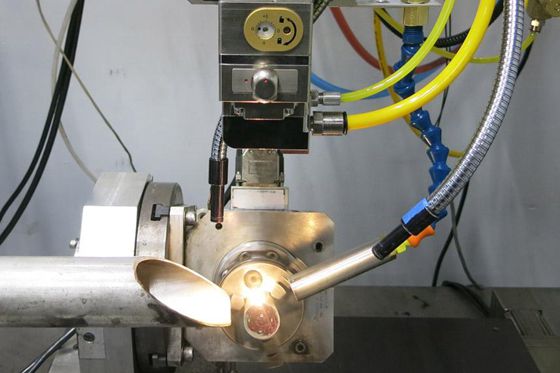
Electron beam and laser welding
Electron beam welding (EBW), also called electron beam welding (EBM), is an arc welding process that uses a concentrated flow of electrons to melt filler metal and join two pieces of material.
Gas welding
Gas welding is an excellent method for joining thin sheets of steel, aluminum, copper, brass, stainless steel, titanium and other alloys. It does not require electricity and is extremely economical.
Gas welding is also suitable for joining small components such as nuts, bolts, washers and springs. However, gas welding requires a lot of skill and experience. Isn't it time to start gas welding? We have a step-by-step tutorial to help you master the art of gas welding.
Defects often occur when welding sheet metal. We have a dedicated article on common defects and how to fix them in various sheet metal manufacturing processes. Don't forget to check it out.
Types of Metal Used in Sheet Metal Welding
Although stainless steel is a commonly used metal in sheet metal welding, others are also used. This includes aluminum, carbon steel and even gold.
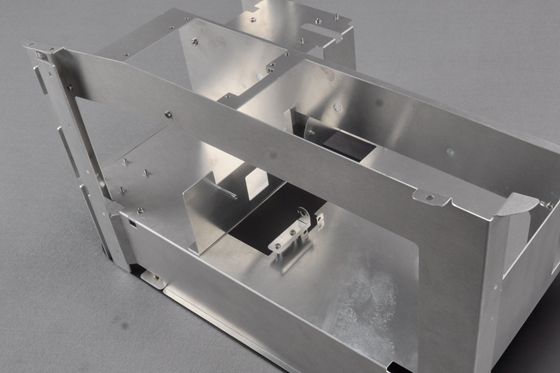
Each metal has its own advantages and disadvantages that must be considered before welders begin their projects. Carbon steel is the cheapest and most commonly used metal for welding sheet metal. It is strong and easy to weld, but also susceptible to rust and corrosion.
Aluminum is another popular metal used in sheet metal welding. It is lightweight and corrosion resistant, but can be difficult to weld.
Gold is the most expensive metal used in sheet metal welding. It is incredibly strong and does not corrode, but it is also very difficult to weld.
Surface to be considered for sheet metal welding process
We have listed the best finishes you can consider when choosing solder plates.
Flat surface
Flat welding works best on flat surfaces. When welding on a flat surface, you must hold the torch at an angle to the surface. It's best to also move the torch back and forth along the seam to ensure all sides of the seam are melted.
Horizontal surface
When arranged horizontally, the plates give the welder the impression of a flat surface. However, they can take two different forms.
Weld bead
The process of joining two surfaces at an angle creates a fillet weld. One piece of metal is placed on top of the second piece of metal and both pieces are heated until they are soft enough to fuse together. After the two pieces of metal are fused together, the resulting weld looks like the letter “L”.
Groove welding
A groove weld occurs when two pieces of metal meet at an angle. One piece of metal is placed over another and then the two metals are pressed together. The result is a seam that looks like a groove.
Expert Tip: For horizontal surfaces, electrostatic welding is the best option.
Vertical surface
The welder is usually in an upright position facing the surface when in the vertical position of the welding axis. When soldering, you need to hold the torch at a 45° angle to the plate. You also need to keep the electrode tip away from the molten metal.
If you point the torch directly at the molten metal, the metal will flow downward and cover the electrode tip. This means you won't get a clean arc and the weld will be of poor quality.
aerial surface
Aerial welding is the most demanding type of welding because the molten metal flows downward as weld. Also be careful with splashes. Minimize the size of the weld pool by using sufficient filler material. And remember to use enough heat to get a good weld.
10 Tips for Welding Sheet Metal
Now that you know some of the metals used in sheet metal welding, here are some tips to get you started. First: always use clean, dry tools. Wet tools can cause metal to rust and corrode.
Secondly, when welding metal, be sure to use the correct amperage and voltage. Too much or too little can cause the weld to become weak and break. Finally, always test your welds before using them. This will ensure they are stable and do not break under pressure.
Shop Safety When Welding Whenever you use welding equipment, it is important to consider shop safety. This includes wearing the correct protective equipment such as: B. a welding helmet, gloves and apron. Also make sure you always have a fire extinguisher on hand in case of an accident.
Now it's time to give you some expert tips so you can weld metal perfectly.
1. Use proper technique for metal
Before arc welding or oxygen gas, there were simple ways of doing things. Thanks to modern technology, welding tough metals like stainless steel and titanium is now easy. But each type of metal requires a different technique and it is up to us to choose the most appropriate one. We have to decide on the best method.
2. Use jump welding method
The technique is known as “skip welding” and involves making several points or short welds in strategic locations to ensure the position of the thin plate. After a few minutes of cooling, the welder can continue welding in previously unweldable areas. Jump welding can reduce metal deformation and warping.
Lap welding is an effective method for joining thin sheets of metal. This allows you to avoid deformations and deformations of parts.
When welding, avoid shaking the torch; instead, move the torch back and forth quickly along a straight line.
3. Spot welding technology
Spot welding is an excellent method for joining thin steel sheets. It is also called spot welding. Tacks are very small welds that do not cause any damage to the surface of the material.
When joining two pieces of metal, make sure there is a gap of 1 mm between them. Then, place a nail exactly in the middle of the distance.
Once the pin is in place, you must press it firmly on both sides until it melts. Once melted, the pin adheres to the metal and forms a strong bond.
4. Take a metal test
You must test the metal before starting series welding. Shop Safety When Welding Whenever you use welding equipment, it is important to consider shop safety. This includes wearing the correct protective equipment such as: B. a welding helmet, gloves and apron. You should also always have a fire extinguisher on hand in case of an accident.
There are many variables that can affect the quality of a weld. Therefore, it is important to optimize your process to achieve the best results. This includes using the correct amperage and voltage and ensuring your tools are clean and dry. This will give you a prototype of your product, whether it is semi-finished or finished.
5. Select filler metals
It is essential to choose a filler metal that is compatible with the mechanical properties of its manufacture. When using a filler metal, it is necessary to consider its thickness. Thicker metal requires more heat to melt. If you use metal that is too thick, you risk overheating and damaging the material. On the other hand, if you use metal that is too thin, the weld may not hold together well.
You also need to consider the type of metal you are welding. Some metals require different fillers. For example, aluminum requires a thicker filler than steel.
6. Use a small electrode
Use a rod thinner than metal. Use an electrode smaller than 1/8 inch. With a smaller electrode you can create a narrower arc, reducing wear and allowing the user to grind the electrode down to a smaller size.
7. Use small diameter wire
When welding, it is necessary to take into account the material used. For example, if you are welding aluminum, you will need a different diameter of wire than if you are welding steel.
When choosing the right yarn size, you should also consider your skill level. If you are just starting out, you should choose a small wire as it will help you with soldering. As you gain experience, you will become more comfortable with larger sizes.
8. Use argon-based shielding gas
When welding aluminum, use a shielding gas with a higher proportion of argon. Argon is an inert gas that does not react with metals like oxygen. Therefore, it does not oxidize the metal. If you use pure argon, you will need to add carbon dioxide to the mixture to increase the density.
9. Adjust the heat
Heat is the most important factor in welding sheet metal. Too much heat will melt the metal and cause the connection to fail. To avoid this, we use different types of heating depending on the type of metal.
For thicker materials such as steel, we use tungsten inert gas (TIG) welding as this results in a higher quality weld. When welding thinner materials like aluminum, we use electromagnetic welding because it allows us to place the weld at any angle.
We also use a torch that heats the tip of the electrode wire instead of the base, allowing the heat to be concentrated in the area where the welding will be carried out.
10. Choose the right company
Metal welding is an industrial process that uses heat and pressure to join metals. Welders must follow strict safety procedures to avoid injuries. Choose a company that offers customers a full range of services, including manufacturing, repair and remanufacturing of welded parts. In addition, the company must also provide technical support and advice.
Concluding
Welding sheet metal is easy if you know the correct techniques. Read sheet metal welding tips to improve your welding skills and get the most out of them. Of course, you can also leave this to the professionals.
WayKen: Your Reliable Partner for Sheet Metal Welding
Common questions
Which welding process is suitable for thin metals?
When welding metal, TIG welding is the best method. It is accurate and ensures that the welds are exactly where they are supposed to be. This makes the final product look great.
How do you weld thin sheets?
Welding thin materials requires high temperatures. For this reason, we need sufficient energy supply. Depending on the thickness of the material we can use different techniques. For thicker materials, we prefer MIG welding because it allows us to weld thick sheets in less time. However, if the thickness is minimal, TIG welding is the best option.
Can I use AC or DC power when MIG welding aluminum?
MIG welding is a simple and quick way to join metals. Both AC and DC MEG welding are suitable for aluminum. However, DC welding is the fastest because it does not require any special equipment.

























































